Cineum Cannes, a futuristic iceberg on the French Riviera
- Elisa Nori

- Mar 28, 2023
- 14 min read
It seems to wander according to the winds and currents, surfacing for a minimal part of its volume, it stands out proudly like white gold.
Thus the Cineum Cannes shows itself to my imagination, to my interpretation even if it coincides with the impression it has aroused on other people; a large diamond of ice detached from the polar pack ice, with a technological heart full of emotions as only cinema can be.
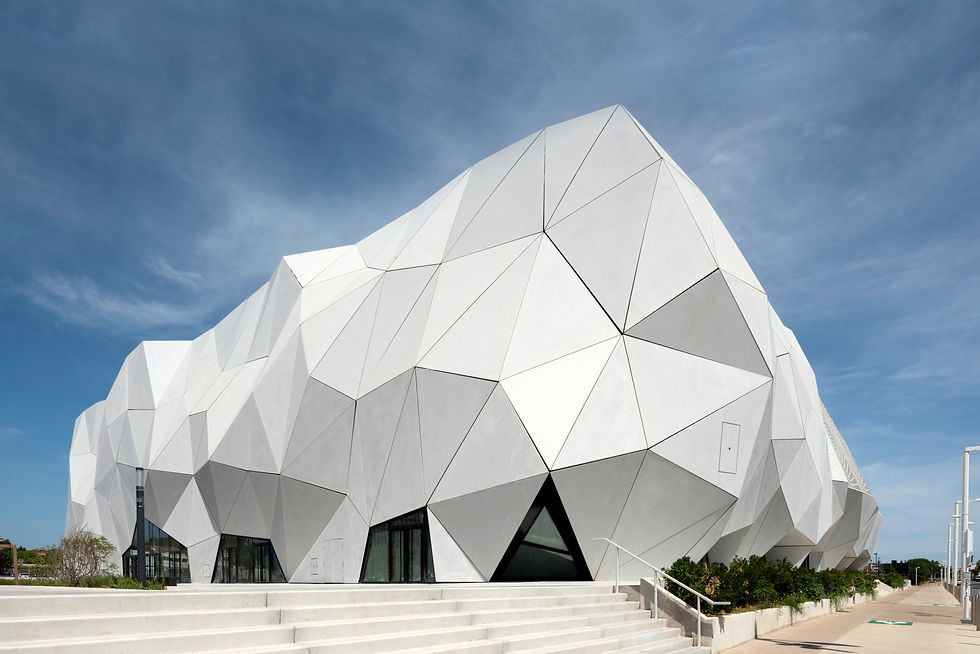
In truth, in fact, the water itself of the icebergs, unlike what is thought, is sweet.
In the realm of ice when the sun goes down, the aurora borealis can already be glimpsed, putting on a show in all its magical and fascinating beauty.
We enter that romantic atmosphere that dreamers from all over the world await, just as we impatiently await the start of a film whose trailer has enraptured and conquered us.
Rudy Ricciotti, internationally renowned architect and engineer, shaped this structure located in the La Bocca district in Cannes, the city where the prestigious International Film Festival takes place, one of the most famous film festivals in the world.
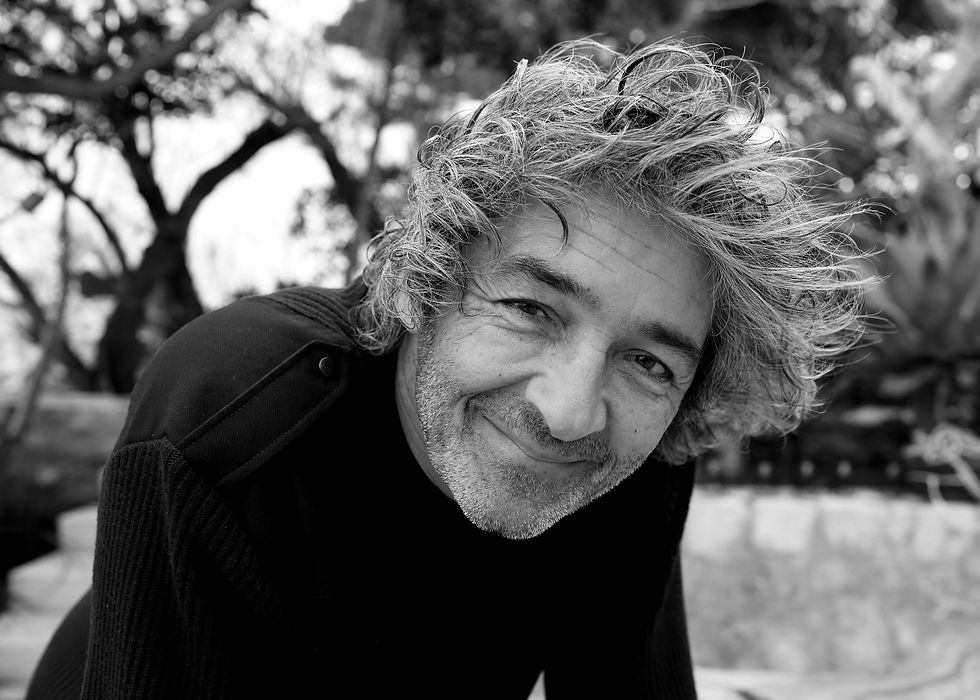
Defined as "the Quentin Tarantino of architecture" and "goldsmith of concrete",
rebellious and revolutionary has confirmed once again through his creative force with solid technical foundations that cinema is not just a closed place where people go for intellectual seduction; if we are talking about art, the structure must also represent it at its best, it must anticipate what is hidden inside in a distinctive way.
A shell where sensitivity is discovered by reaching the heart, whose design of the pillars of the facade on the concrete walls was made using very high performance fiber-reinforced concretes that possess undisputed characteristics; protection against any chemical element which is unable to pass through the walls of a BFUP structure by capillarity, which is therefore watertight.
Unlike steel, it is durable and requires no maintenance.
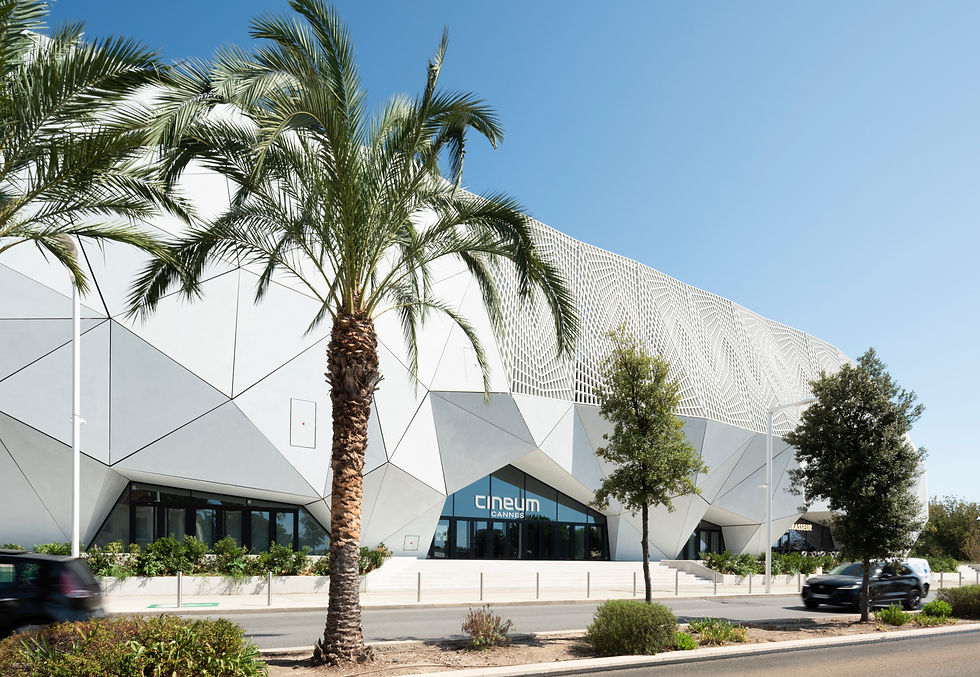
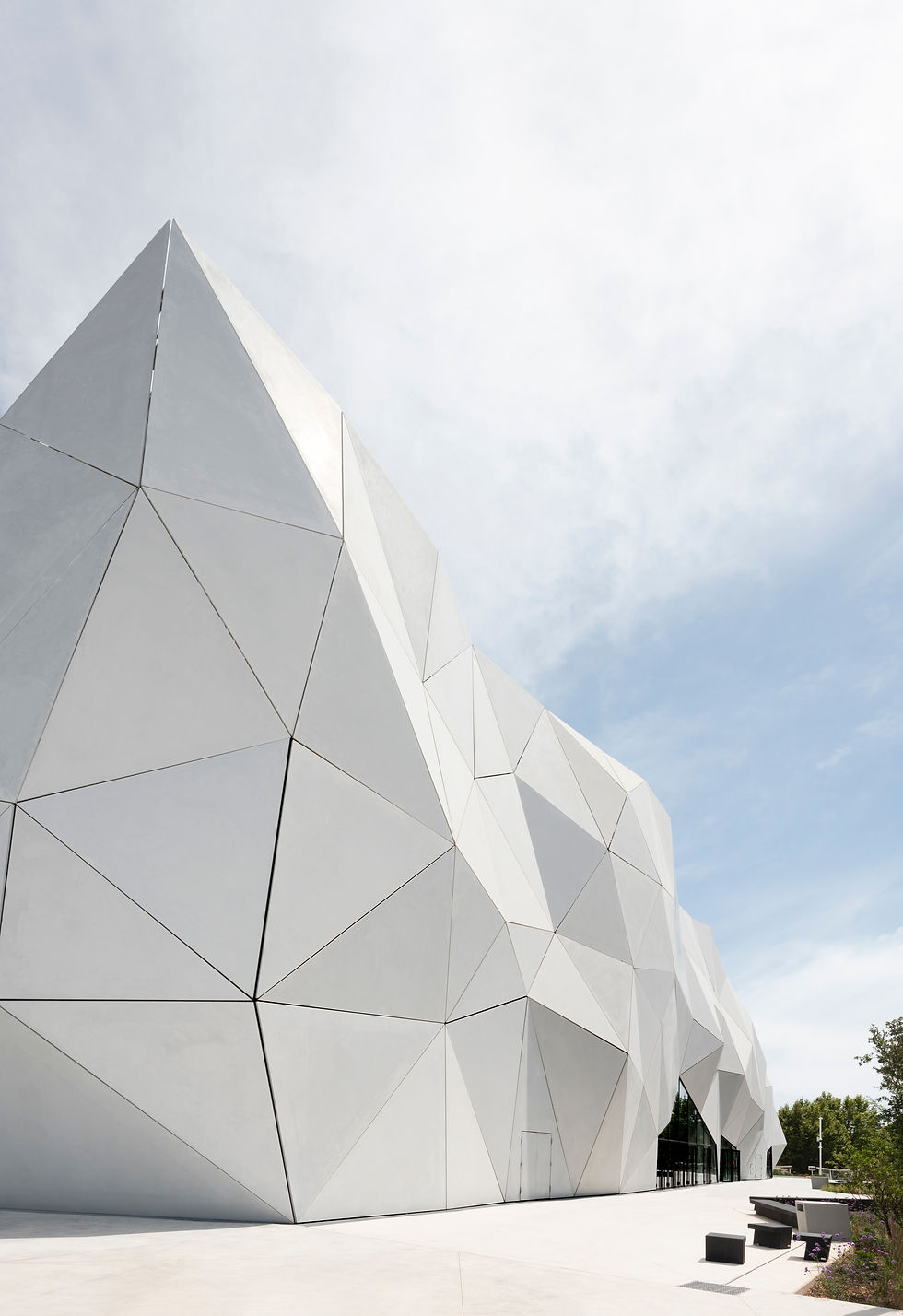
Cineum Cannes is a 9,400 m2 project, which incorporates 12 screening rooms with 2,450 seats and is the first in Europe to be equipped with the Dolby Atmos system and the first in France with Dolby Cinema technology.
The best image quality is guaranteed by 4K HFR laser projectors and given that each film has its own identity, Cineum offers just as many theaters: IMAX, Classiques, Aurore, screenX, Lodge.
One of the theaters has the largest screen in southeastern France, with a base of 24 metres.
The interior design was done by Israeli artist and designer Arik Levy; viewers will be able to discover additional editorial content on the screens, strolling through individual bubbles in the shape of futuristic cocoons.
On the ground floor, an exhibition space of 500 square meters is dedicated to the visual arts and an immersive gallery with scenography, while on the second floor we find a magnificent 200 square meter lounge bar which adjoins the room entitled "Lodge"; Nonotak Studio, on the other hand, took care of the scenography through light and sound installations in the IMAX, Aurore and ScreenX entrance halls.
Still inside Cineum, on the first floor, we find ILLUCITY which is a virtual reality (VR) game area that brings together the best experiences and all of them are multiplayer.
You can choose your adventure from 9 VR Escape Games or " TOYLAND: Crazy Monkey ",
a mixture of roller coaster and free-motion shooter in a crazy universe.
The fractal facade of Cineum Cannes is well balanced with the chosen material and the final message lies "in the many facets that want to symbolize the technical and creative plurality of cinematographic professions".
The terrace is covered and protected by a concrete grid which gives the building elegance and lightness.
The shadows that are projected with the passing of the hours make us perceive the structure as a mineral object that reveals itself according to the angle and how the light falls on it, it speaks to us. This also happens in cinema, where the point of view is related to the way in which the director positions the camera and from this a real cinematic language is generated, thus conferring profound psychological meanings; angle, height, inclination are three determining variables. As many faces as there are in cinematic interpretations, as many ways of seeing, perceiving and interpreting what we are looking at.
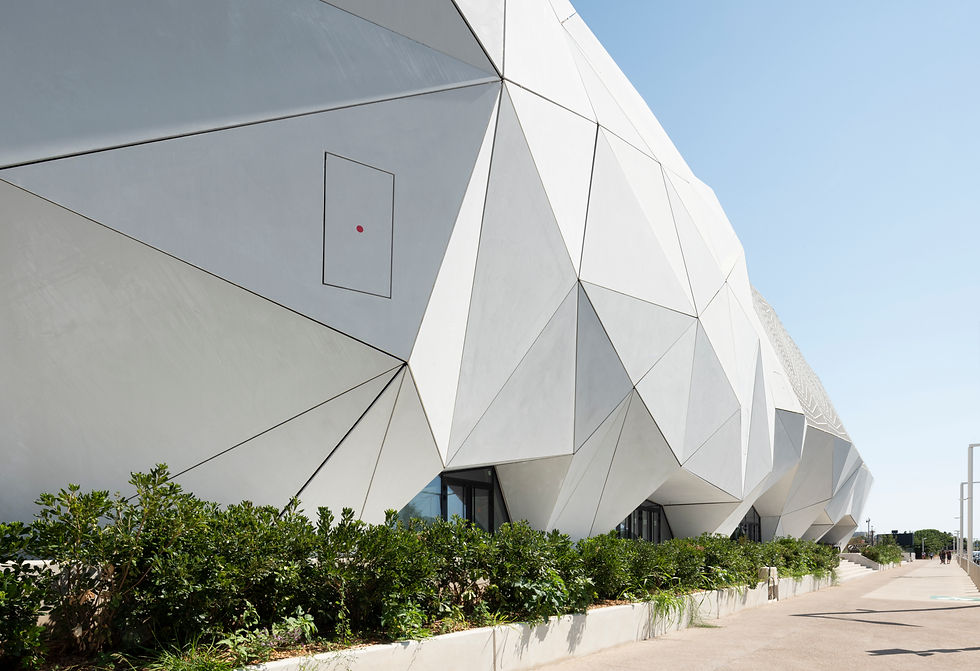
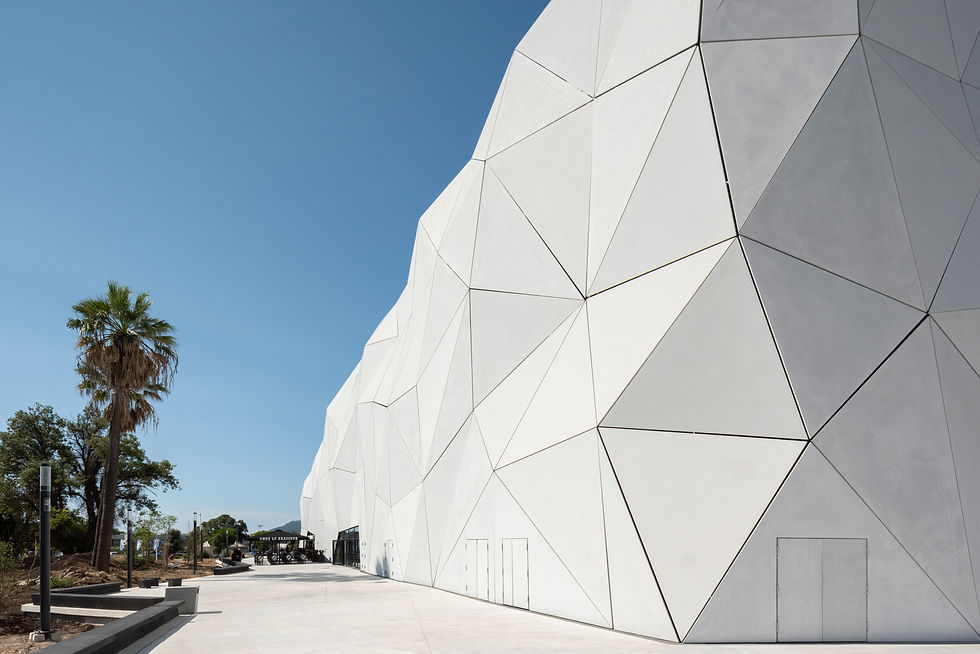
Rudy Ricciotti has continuously demonstrated that he knows how to use his knowledge in a poetic way, in fact his projects have a history, they are not reduced to being mere constructions without a soul; final result often and willingly of a work linked to functionality only, without any kind of creativity and visionary capacity linked; he draws in his head, managing to reconstruct what he wants.
It is how we do things that makes the difference, not what we do, and he himself has stated several times that "Architecture is a profession that must be honored before expecting it to honor us in return".
Rudy Ricciotti
National Grand Prize for Architecture
Gold Medal of the Academy of Architecture
Member of the Academy of Technologies
Commander of the Order of Arts and Letters
Officer of the National Order of Merit
Knight of the Legion of Honour
Auguste-Perret Prize of the International Union of Architects (UIA)
International Prize "The Masters of Architecture" of the Italian Association of Architecture and Criticism - AIAC
Special Jury Grand Prix of the Équerre d'Argent
Rudy Ricciotti is a French architect and engineer of Italian origins.
Born on August 22, 1952 in Algiers in Algeria, at the age of three he moved with his family to France, spending his childhood in a small village near Arles.
Accompanied by his father, young Rudy visits construction sites and discovers a real interest in construction.
After studying engineering in Geneva, he returned to Marseilles in 1974, where he graduated from the École Nationale Supérieure d'Architecture in 1980 and in the same year he founded his own architecture studio.
His studio is located in the city of Bandol, on the southern coast of France, 50 km from Marseilles, and he lives in a villa in Cassis, halfway between the two French towns.
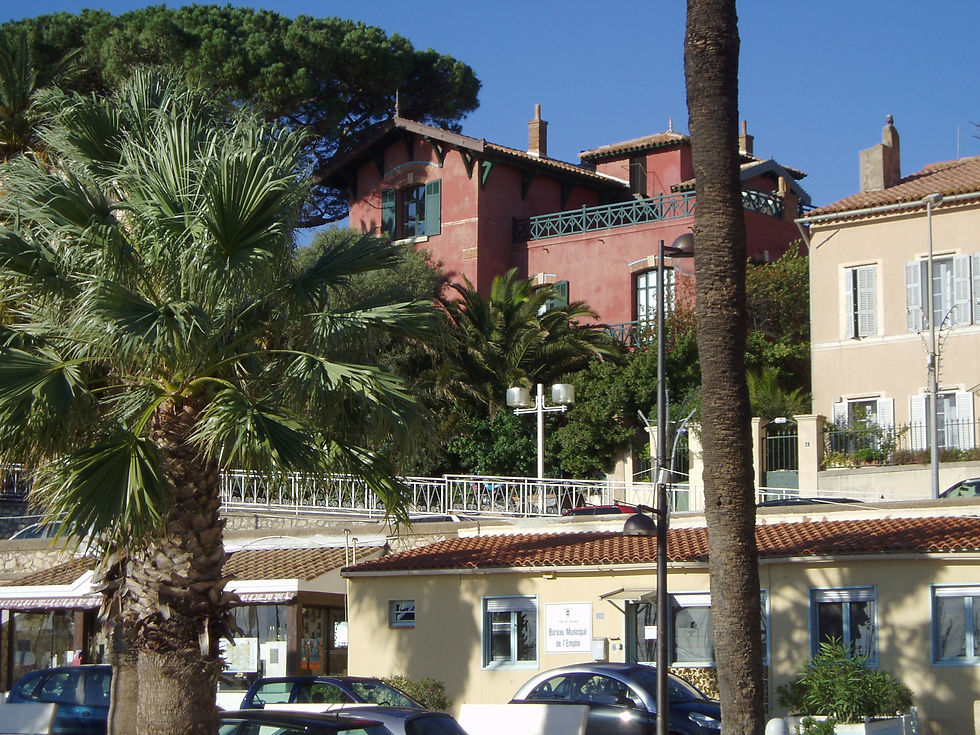
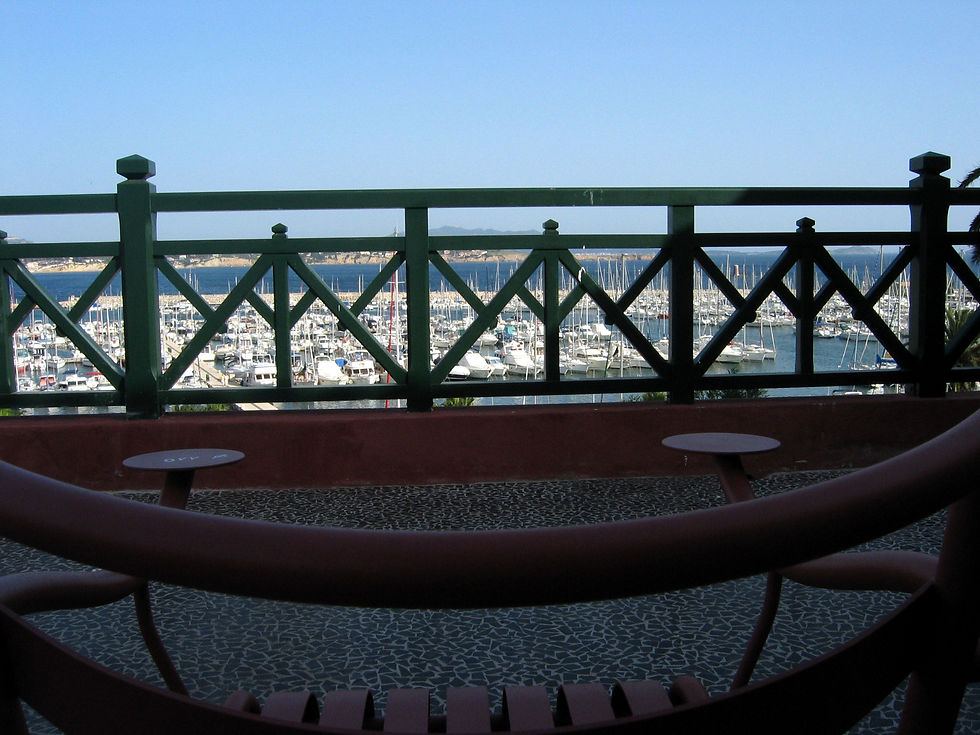
Qualifications
1980 – DPLG Architect – Marseille School of Architecture, France
1975 – Architectural Engineer – Geneva Engineering School, Switzerland
Architect and engineer, Grand Prix national d'architecture in 2006, Gold Medal from the Academy of Architecture, Rudy Ricciotti is the representative of this generation of architects who combine creative strength with a true constructive culture.
Pioneer and ambassador of concrete, he has given life to innovative projects such as the Vitrolles Stadium - 1994, the National Choreographic Center - Pavillon Noir in Aix-en-Provence - 2006, the Jean Cocteau Museum in Menton - 2011, the Department of Islamic Arts of the Louvre Museum - 2012 and the MuCEM - Museum of European and Mediterranean Civilizations in Marseille - 2013, the Jean Bouin Stadium in Paris - 2013, the Pont de la République in Montpellier - 2014, the Field of Rivesaltes Memorial - 2015, the Bordeaux Métropole Arena and its air park in Floirac - 2017, the Humanistic Library in Sélestat - 2018, the Salle des Musiques Actuelles et Contemporaines du pays d'Aix in Aix-en-Provence - 2019, the Gare- PEM in Nantes - 2020 and Le19M, the Manufacture of Fashion Crafts of Chanel in Paris - 2021.
Among his main achievements abroad are the Nikolaisaal Philharmonic in Potsdam, Germany - 2000, the Bridge of Peace in Seoul, South Korea - 2002, the "La Boverie" Museum, the International Center of Art and Culture in Liège, Belgium - 2016.
Rudy Ricciotti is also the author of numerous books and pamphlets, including Manifeste légionnaire - 88 pas-minute au service de la démocratie, published by Nbe - 2021, Le Beau, le brut et les truands (conversation with Paul Chemetov) published by Textuel - 2021, Premières lignes published by Cassis Belli - 2019, L'exil de la beauté published by Textuel - 2019, Je te ressers un pastis? published by Éditions de l'Aube - 2019, Le béton en garde à vue : Manifeste architectural et théâtral, published by Éditions Lemieux Éditeur - 2015, En vain published by Éditions Jannink - 2014, Conversations imaginaires "ou pas" published by Éditions un autre Reg'Art - 2014, L'architecture est un sport de combat published by Éditions Textuel - 2013, HQE published by Éditions Le Gac Press - 2013
Rooted in his roots, brilliant and bold when it comes to responsible and fair work,
Rudy Ricciotti is a warrior of those who accompany words with deeds.
He fights both through architecture and writing, he keeps alive the flame of a thought that he exercises because it is the virtue of an autonomous mind.
Wisdom, poetry and that hunger for culture - which is of vital importance in minds that ask themselves questions - are perceived through his words, which always leave you in melodious reflection.
Architect Ricciotti, the Cineum Cannes struck me in a significant way and I was struck by it! As I wrote in the introductory part of the article, one has the impression of being in front of an iceberg, a large diamond of ice that broke away from the polar ice pack...an impression it has aroused on other people...It is at the same time projected into the future through a beating technological heart full of emotions like cinema is capable of being... What inspired you when you imagined the structure in your mind?
Rudy Ricciotti: A cinema is usually located in a non-place, in a non-territory, in a recently urbanized commercial area far from the traditional city. Recourse to narrativity is the key needed to resist the surrounding mediocrity and the banality of the neighborhood. Ultimately, this project attempts to reject the exile of beauty and to retain some optimism.
I find the terrace suggestive...during the day it creates very interesting plays of projected shadows with the natural light, while at night with the internal artificial light, it seems that an unidentified object has settled in all its grandeur. How was it integrated and how does it complement the remaining structure?
Rudy Ricciotti: From this terrace, cinema audiences can associate their gaze with a wider territory... towards something different from the surrounding urbanism.
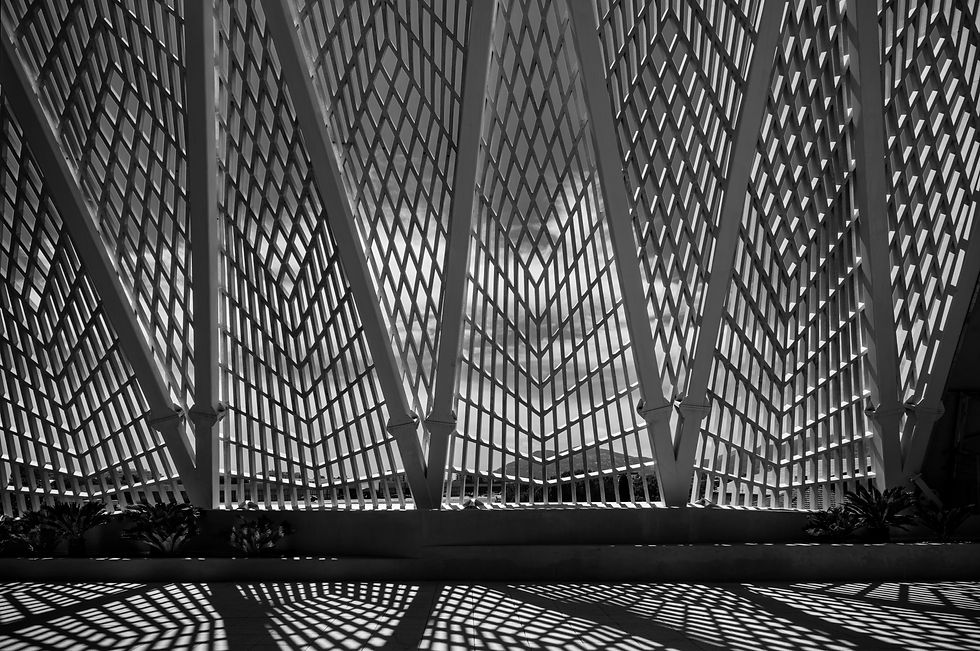
What is your relationship with cinema? I know that he has been called the Quentin Tarantino of architecture and that he is a lover of spaghetti westerns... One of his books bears a clear reference in an ironic and provocative key to one of the most famous westerns in the history of cinema "The good, the ugly, the bad" by Sergio Leone. How was this passion born?
Rudy Ricciotti: I am a fanatic of the period of Italian neorealism.
Pier Paolo Pasolini, Ettore Scola, Federico Fellini, the Taviani brothers... have developed my taste for storytelling and narration. My children, and also my grandchildren, almost all have Italian names (Fabio, Ornella, Enzo, Ennio...). This filiation at the origin allows us to still remain a little Italian.
I really like Italian literature, I think I've read almost everything by Curzio Malaparte or Pasolini, and great authors little read in France like Gabriele d'Annunzio... These referents shed light on my taste for the surreal and the excess.. . or rather the only necessary condition to escape existential anxiety or one's own paranoias...
He is defined as a controversial figure, at times polemical and audacious...even if I admire and respect this thing, because I think that not getting confused among the mass and being able to think for yourself is absolutely necessary, without subjecting yourself.
In a society where people often no longer think independently, but allow themselves to be influenced by continuous external bombardments, we need voices that remind us that we are first and foremost free thinkers. I find that his projects reveal a lot about her ... observing them there is a game of see-through, of elegance, of symbols and metaphors, of splendid shells that envelop something precious inside them almost to encircle it, to reveal a sensitivity that must be protected.
Once again he has made concrete poetic, a material that might seem "rude" but infinitely rich. Do you feel that it somehow represents you?
Rudy Ricciotti: Not really, I'm simply an architect and an engineer... If the media want to make a caricature of me, I can't stop them from doing so and take advantage of it...
On the other hand, what really matters to me is to produce buildings with a lot of manpower, so that the cost of construction becomes the key to being able to redistribute wealth fairly.
This is my doctrine: all partners in the act of building are brothers in arms.
La Bastide Rouge is part of the Cannes On Air project, whose objective is to strengthen the creative and audiovisual sector of the city and the Cineum Cannes has also been designed to best qualify the entrance to the city of Cannes. tell me more...
Rudy Ricciotti: La Bastide Rouge is a project by Christophe Gulizzi, a former assistant of mine. It develops a formal autonomy starting from a rationalist work whose geometry exaggerates, as I did for the Cineum. Ultimately, both projects play their role at the entrance to the city.
Pierre Lescure, the former president of the Cannes Film Festival said: "For cinema to remain a popular culture, cinemas must be beautiful."
To understand the outside we must see inside, to understand the inside we must see outside.
You said in an interview: "People enter into a relationship with architecture and have a bodily, emotional, symbolic and even spiritual experience with that space."
Even a building has a soul that corresponds to whoever created it and if the soul shines through the visual beauty, then the work is completed?
Rudy Ricciotti: No, the job is never done. The talent of a filmmaker is to pursue the social dream of Cinema Paradiso so dear to our collective memory.
The greatest creator of high-tech imagery in history and of possible future scenarios is certainly the world of small and big screens. Many buildings are inspired by the sci-fi genre and everything that revolves around it... Do you think we are on the right track to enter that imaginary that has made everyone dream at least once?
Rudy Ricciotti: Architecture is not science fiction. Digital nonsense no longer works when it comes to the act of building.
Architecture is not virtual... and neither is war.
Without distorting their identity, the buildings are increasingly integrated into the context which becomes an active part of the construction itself; the psycho-physical well-being of those who will live there or use them for daily practical/work activities is the basis of every project.
The techniques and materials used - typical of the local culture - avoid greater polluting emissions in favor of renewable sources. These are among the key principles of bio-architecture... and among the materials of nature we have clay, wood, natural fibers and concrete. What is your view on this?
Rudy Ricciotti: The key to avoiding pollution is the short production chain, the environmental equation must refer to the distance between the place of production and the place of realization. On the other hand, the longevity of a building is also important. It is obvious that the environmental impact if referred to 10 or 100 years is not the same.
Let us rather broaden this awareness to the economic and social question: the act of building basically produces taxes, VAT..., and not revenues exclusively reserved for tax havens or countries that do not respect the health and social rights of workers.
When the Greens have understood this, we will have made real progress in terms of political maturity... even if today the idea of bringing timber from Eastern countries is more cynically fashionable; steel from Türkiye; minerals from Africa, components of Chinese finishes; or fabrics from India or Bangladesh. A clean construction site in cancel culture is always dirty elsewhere.
"The word says it all. That's why I write and I don't just build. Writing has this ability to develop complexity, to explain it"
President of the Al Dante publishing house, a rather rich bibliography and the pleasure of writing that accompanies it as an introspective and intimate moment...
Again she: "If today we have such poor architecture, it is because we do not have the ability to bring out the true complexity of thought. I write so as not to lose my soul. It is true, I prefer writing to drawing"... I would like to end the interview trying to convey this depth of yours and I would like to ask you to describe the Cineum Cannes to me not through the eyes of an architect, but through the eyes of a poet.
Rudy Ricciotti: The image is a silent commentary on the words, a translation of images... and the music of the films has this strong impact capable of making the words autistic... so that everyone can find a little remedy in it to their own punishments.
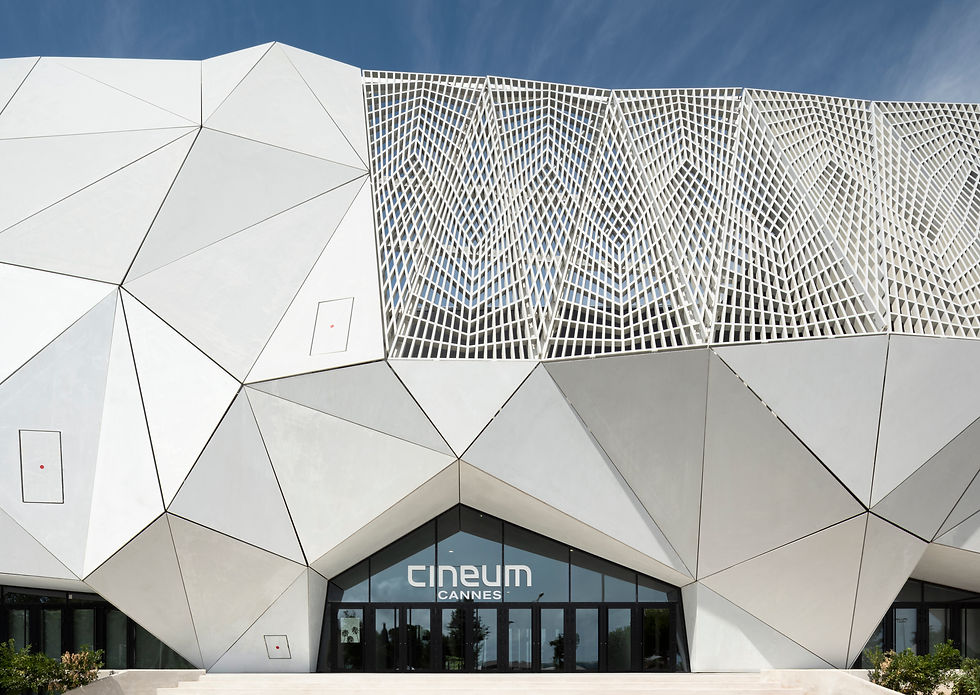
Through architecture, Rudy Ricciotti becomes the spokesperson for a series of purposes aimed at involving as many people as possible for their benefit, primarily as regards the economic and social point of view but also the environmental aspect finds considerable advantage; the desire to reduce the distance between the place of production and the place of realization which, as expressed in the interview, thus avoids higher polluting emissions: better if at zero kilometre.
Long supply chains, born and grown through large-scale trade and globalization, are characterized by numerous steps before reaching marketing and it is easy to understand that this does not protect the environment, while the short supply chain allows for traceability and transparency, two tools which, through responsibility and safety, make it possible to reach new levels of sustainability.
If you want projects to be an extension of the people they host, guaranteeing them the best benefit, it is better if they are implemented by reducing all those often superfluous steps... even worse if achieved for mere personal interests.
Rudy Ricciotti has repeatedly reminded us of working with cement "because it is a local material which, in addition to promoting the need for specialized labor and safeguarding artisan savoir-faire, above all is not speculative."
A patriot and tied to strong values, he chose to live and work near Bandol, where everything is Mediterranean, Latin, Arab, but a visceral Italy devoid of artifice binds and draws anyone who is part of it back to its roots, bringing back to the cultural movement under which the great Italian directors were trained, namely neorealism which finds its greatest expression in cinema.
Since then, Italian cinema has undergone countless metamorphoses, losing its fame and quality over time, only to then recover at times.
The generational change influenced by the social context does not always appear as something positive but I am convinced that the very will to create suitable and pleasant places so that cinema can continue to educate, make us reflect, and dream when we feel the need is vital importance.
A medium as powerful as the cinema is undeniable that it still has the possibility and the power to spread a message, and the importance of transmission centers is equally clear.
The techniques change, the means for the realization adapt to a constant evolving technology but the urgent need to communicate with others in man persists; make others participate in one's own vision whether it is closely linked to reality or on the contrary projected towards imaginary settings, always and in any case the product of inner impulses and elaborations.
It is undeniable that everyone perceives life according to their own experiences in a completely subjective way and that the same habits and daily events lead to as many ways of narrating life.
Cineum Cannes is a reality that aims, beyond the aesthetic pleasure we derive from watching it, to complete a city that has had cinema in its blood for more than 70 years.
Included in the wide-ranging project, promoted by the Municipality, called Cannes on air which includes a university center aimed at writing and a series of start-ups in the audiovisual sector, it offers engaging behind-the-scenes experiences of films, but at the same time it is attraction and cultural center.
The link between cinema and the arts is underlined and amplified by the vast and shady interior whose neutral and elegant background suggests that it was also conceived and adapted to host exhibitions.
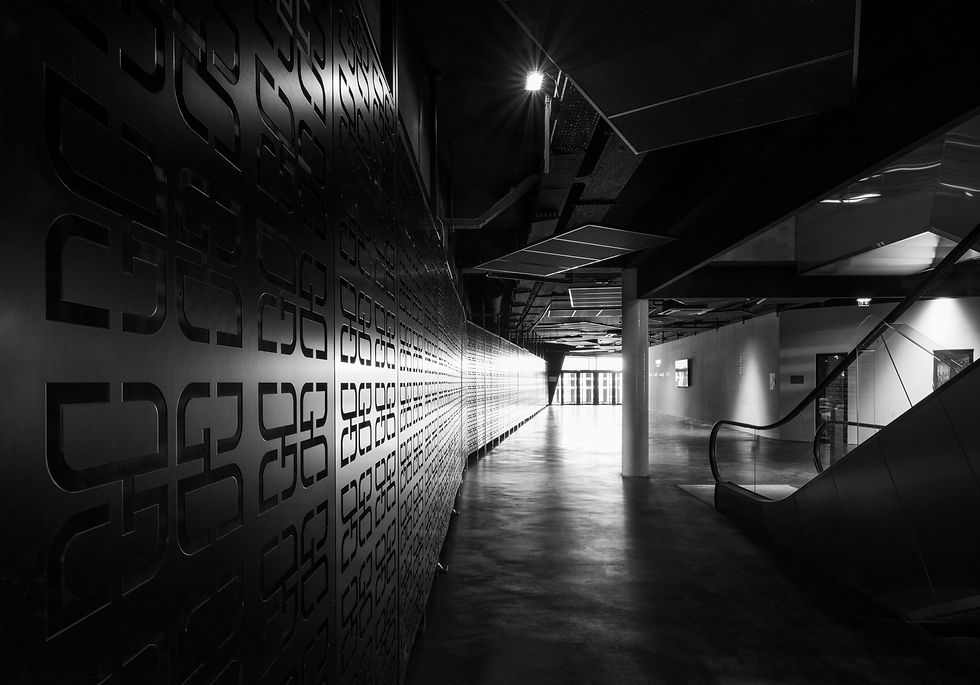
What makes the difference in Cineum Cannes is the investment in technology that sees it among the first in Europe for equipment: the screenX room offers three screens and four video projectors arranged on both sides of the main screen for a 270-degree view of the film, the Lodge room features the enthralling DTS:X audio system combined with Finnish Flexound technology integrated directly into the chairs: thanks to the physical vibrations and high quality sound it allows viewers to feel the subtlest emotions pervading their body.
Designed and engineered in Finland, Flexound was originally created to help autistic children and now the patented technology can be incorporated into cinema seats. "In the past, the theater was transformed into a cinema; today it is the cinema that also becomes a theater or an opera house".
The Aurore room, designed in collaboration with the American company DTS, the French-American company Delair Labs and Didier Lozahic, offers an immersive sound coming from no less than 84 speakers and a non-perforated 21 m high-definition screen, where respect for the work is given by the incomparable precision.
In the classic room, style is not lacking: the Duos room offers two-seater armchairs for those who love being in contact with people when they immerse themselves in the film they are watching, while the Cozy room is inspired by English living rooms and the armchairs have wooden shelves and small lamps.
Last but not least the IMAX room, with a 26 m diagonal screen and a new generation laser projection system with the exclusive IMAX 12-channel audio, to be enjoyed on very comfortable premium motorized chairs.
Cineum Cannes gives back the possibility, through one of the most loved art, to return to socialize in a place where the arts meet and compare, complement and merge: "Since cinema is not just a linguistic experience, but, precisely as a linguistic research, it is a philosophical experience." Pier Paolo Pasolini
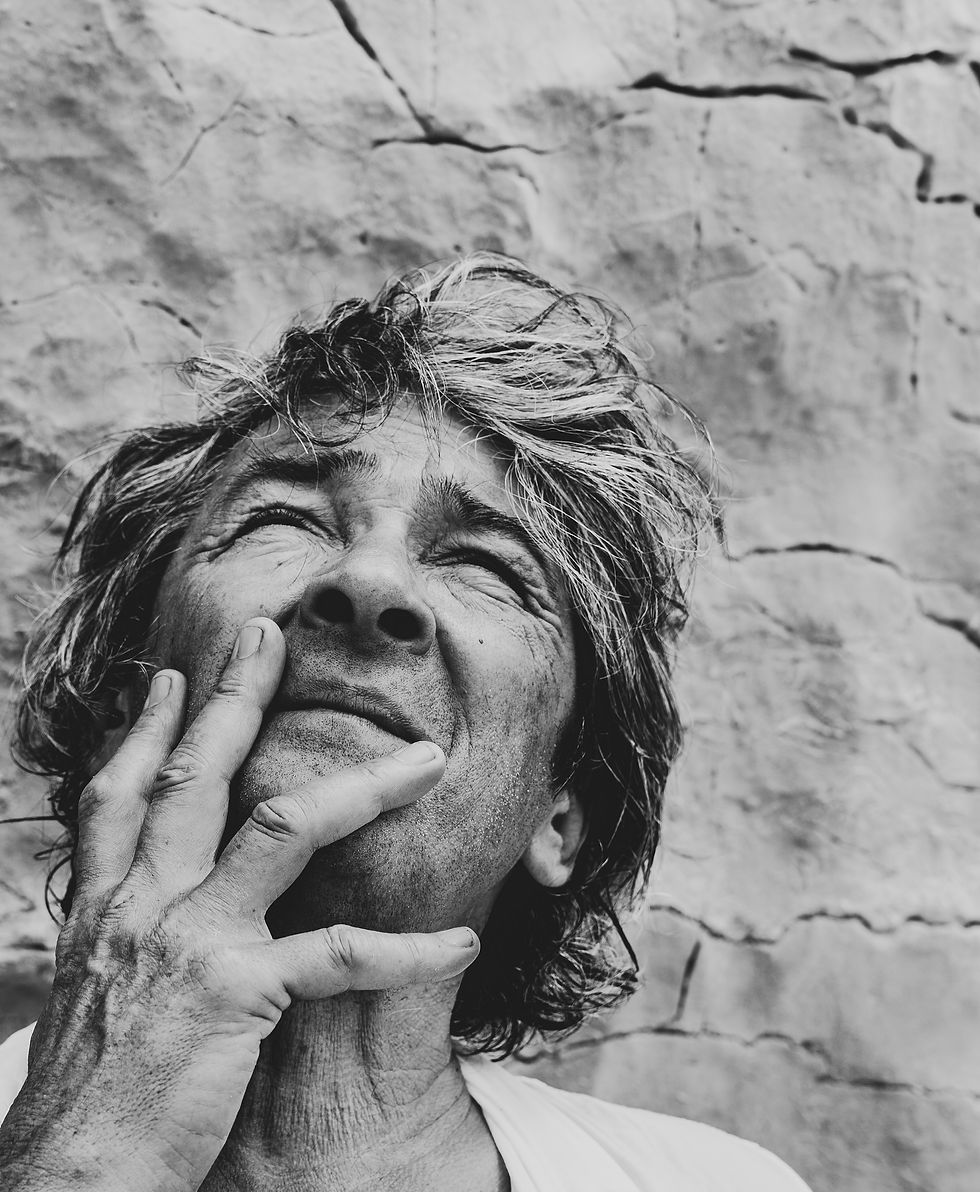
CONTACTS:

Official site: https://rudyricciotti.com/
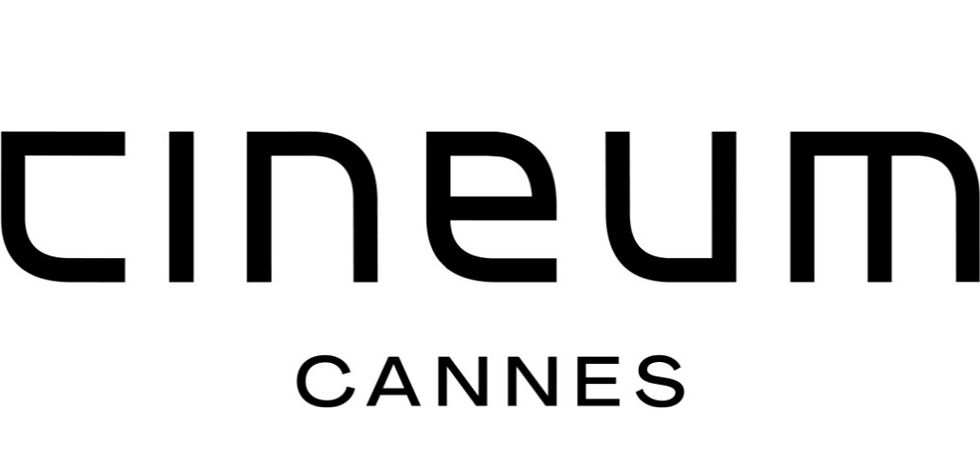
Official site: https://cineum.fr/
Instagram: https://www.instagram.com/cineumcannes
Facebook: https://www.facebook.com/cineumcannes









Comments